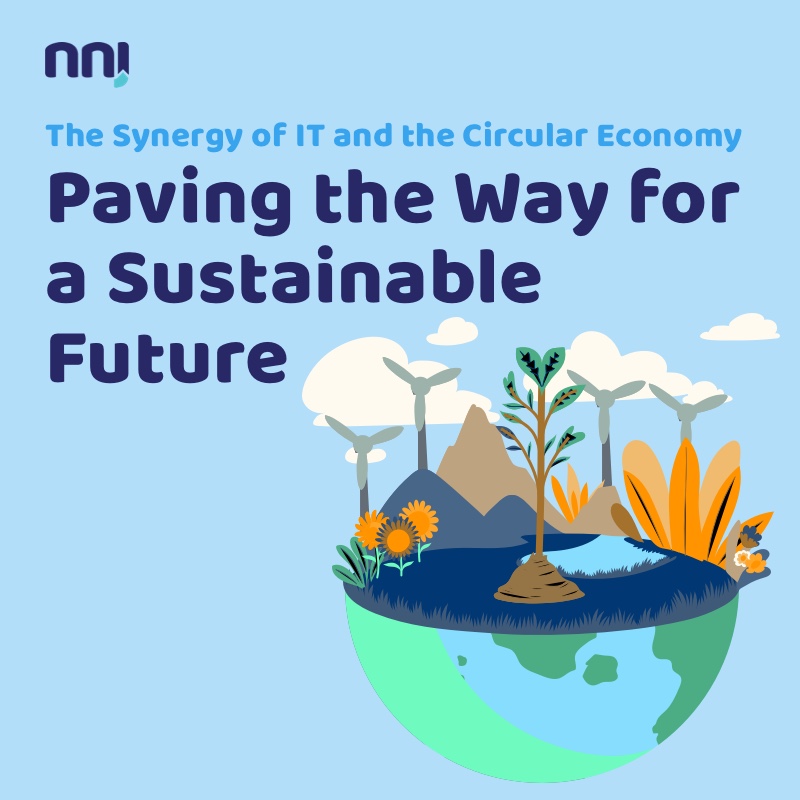The Circular Economy has emerged as a powerful concept, aiming to mitigate the environmental impact of our linear consumption patterns. As we strive towards a more sustainable future, it’s essential that we recognize the pivotal role that Information Technology (IT) plays in enabling and accelerating the transition to a Circular Economy. Today, let’s shed light on why IT is crucial in driving this paradigm shift and creating a more sustainable world.
Closing the Loop:
At the heart of the Circular Economy lies the idea of closing the resource loop and minimizing waste. IT plays a fundamental role in facilitating this transition by enabling efficient resource management, optimizing supply chains, and fostering product lifecycle management systems. With the help of cutting-edge technologies such as Internet of Things (IoT), Artificial Intelligence (AI), and Blockchain, IT empowers businesses to track and trace materials, extend product lifecycles, and ensure that resources remain in circulation for as long as possible.
Data-Driven Decision Making:
Data is the lifeblood of the digital era, and IT excels at collecting, analyzing, and harnessing vast amounts of information. In the Circular Economy, data serves as a catalyst for better decision-making, allowing organizations to identify inefficiencies and opportunities for improvement. By leveraging data analytics, businesses can optimize material usage, reduce waste generation, and identify potential areas for innovation and circular business models.
Collaboration and Networking:
The Circular Economy thrives on collaboration and partnership among various stakeholders. IT platforms and digital networks facilitate seamless collaboration between businesses, governments, research institutions, and consumers. These platforms foster knowledge-sharing, resource exchanges, and joint problem-solving, creating synergies that accelerate the adoption of circular practices. Together, we can build a robust ecosystem where the transition to a Circular Economy becomes a collective effort.
Innovation and Disruptive Technologies:
IT drives innovation and supports the implementation of transformative technologies that enable the Circular Economy. Emerging technologies, such as 3D printing, advanced sensors, and smart devices, revolutionize product design, manufacturing processes, and waste management. IT plays a pivotal role in integrating these technologies into existing systems, unlocking new possibilities for resource efficiency, waste reduction, and sustainable product development.
Nurturing Sustainable Business Models:
Ultimately, the Circular Economy requires a fundamental shift in business models. IT empowers businesses to embrace circular practices such as product-as-a-service models, remanufacturing, and sharing platforms. By leveraging IT capabilities, companies not only reduce their environmental footprint but also tap into new revenue streams and gain a competitive edge in an increasingly sustainability-conscious market.
Embracing the Digital Circular Future:
Harnessing the potential of IT is crucial for unlocking the full benefits of the Circular Economy. From optimizing resource management to fostering collaboration, innovation, and disruptive technologies, the intersection of IT and the Circular Economy offers immense opportunities for a more sustainable world.
Let’s Embrace IT and the Circular Economy:
As professionals, advocates, and change-makers, we have the unique opportunity to champion the integration of IT with the Circular Economy. By promoting digitalization, innovation, and collaboration, we can accelerate the transition to a sustainable and circular future.




